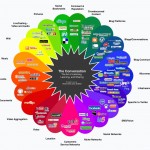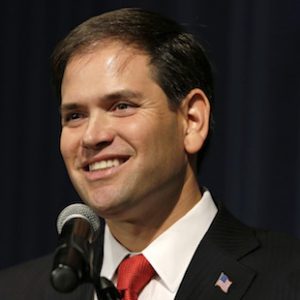
by Alex Patton | Feb 19, 2013 | Political Media
 Pew Research Center recently released a study finding that minorities are increasingly outnumbering whites in their use of certain social media platforms.
Pew Research Center recently released a study finding that minorities are increasingly outnumbering whites in their use of certain social media platforms.
The study entitled, “The Demographics of Social Media Users — 2012”, shows that in general, Blacks and Hispanics are more likely to use social media sites than whites (percentage wise)and almost twice as likely to use twitter & Instagram.
Social Networking Sites
% of internet users who use social networking sites
Use Social Networking Sites All internet users (n=1,802) 67%
Race/ethnicity
a White, Non-Hispanic (n=1,332) 65%
b Black, Non-Hispanic (n=178) 68%
c Hispanic (n=154) 72%
The study goes on to make a point that Urban users are using all social media channels more than suburban or rural users.
Guess what? Republicans can do better among all minorities and Urban dwelling voters.
This study makes no mention of HOW minorities or anyone for that matter are using social media to interact with politics; however, the high use alone should be a further wake up call for changing Republicans’ political outreach strategy.
If Republicans are to get serious about minority outreach, as a Party we must study and understand how these new social media channels can assist us in the effort because it would appear the digital divide exists more in Republicans’ mindset than in actuality.
To read more of the study.

by Alex Patton | Feb 13, 2013 | Political Media

Prophet Agency offers a detailed presentation into trends of interactive design.
Interactive Design Trends Overview
- New devices keep on coming
- Coding & Browsers will evolve rapidly
- Apps are hot
- Useful, Custom and Pretty
- Content Management the easy way
- The giants invest in design
and many more. It is a 14 slide presentation, but well done and informative!
Great Job!
by Alex Patton | Feb 8, 2013 | Political Media

A twitter conversation
I have been called a political nerd on more than one occasion I will admit, I love the ‘science’ of politics. My latest interests revolve around network analysis and the use of twitter for political communication.
In an effort to study how Florida’s elected officials are using twitter, I embarked on a weekend project to round up the tweets of said leaders.
I put together a quick website FLTweets.com. Here I could read the tweets of Florida’s Federal, State Senate, and State House members, and the website allowed me to focus in on how these leaders are using twitter.
I have been watching the feeds for a little over a week now ( I will release further study in posts to come), but lets just say FL’s political class is for the most part horrible in embracing twitter’s and social media’s potential.
Here is my working hypothesis: If elected officials “talked” to voters over a kitchen table in the same manner they “talk” using twitter, they would be clubbed to death by their own constituents before dinner ended.
It is obvious that elected officials see twitter and most likely additional social media outlets as a one-way broadcast channel and NOT a place to interact or “talk” with people. (Much more to follow on this….)
However, as I pondered my hypothesis, a paper in the Feb 2013 McKinsey Quarterly came across my desk, and I thought I would share due to its relevance.
It basically agrees with my hypothesis; however, it uses much more “diplomatic” language.
It too recognizes the problem that leaders just don’t know what to do twitter and social-media.
It has the added bonus of providing a framework for leaders to decide how they can develop their social media skills.
McKinsey says there are six dimensions of social media leadership

1. The Leader as Producer: Creating compelling content
2. The Leader as Distributor: Leveraging dissemination dynamics
3. The Leader as Recipient: Managing communication overflow
4. The leader as adviser & orchestrator: Driving strategic social-media utilization
5. The leader as architect: Creating an enabling organizational infrastructure
6. The leader as analyst: Staying ahead of the curve
Conclusion: When organizations and their leaders embrace the call to social-media literacy, they will initiate a positive loop allowing them to capitalize on the opportunities and disruptions that come with the new connectivity of a networked society. And they will be rewarded with a new type of competitive advantage.
My fellow Republicans, are you listening?
You can read the paper in its’ entirety: Six Social Media Skills every politician needs
PS. Don’t forget to follow me on twitter @alex_patton
by Alex Patton | Apr 19, 2012 | Political Media

Digiday has released the results of its “State of the Industry Survey,” sponsored by adap.tv, which revealed that brands and agencies are planning their online video/ TV ad buys together (for example, in a unified campaign).
Specifically, 48 percent of advertisers and agencies already are planning TV and video together, and 25 percent more will be doing so within the next 12 months. Put another way, among leading video buyers, nearly three quarters of all online video buyers will be planning TV and interactive video together by this time next year.
Ozean Media has for a long time believed there is no such thing as new media, it is media. True, there are new channels, but the fundamentals remain the same. Video is video, and we want the video to be seen by people. Do we care if the video is seen during a television break or online? Nope. It really is that simple. (Yes, we realize that we can extend in different ways, but for simplicity sake – video is video!)
It is all media, and this new study shows you how quickly this is becoming more true.
by Alex Patton | Jan 23, 2012 | Political Media
 A new, national poll of 1,179 registered U.S. voters, tells us that web video creators have a new time frame they must take into consideration.
A new, national poll of 1,179 registered U.S. voters, tells us that web video creators have a new time frame they must take into consideration.
The winner for pre-roll video ads?
:15 seconds
Poll Findings
Of those polled, 54% felt that 15 seconds was acceptable, and 12% went as high as 30 seconds. But the numbers climb even higher, when you exclude the 27% who had no opinion. Of those who do have an opinion—
- 73% find 15 seconds acceptable;
- 5% find 30 seconds acceptable.

Please follow this link, if you would like to learn more about the video pre-roll findings.
You follow this link, register and read the entire poll “Time to view Online Ads?”
by Alex Patton | Jan 11, 2012 | Political Media
As many candidates on our roster can attest, I have a serious aversion to campaign signs. In fact, I dislike them.
I feel like they simply do no work, if you define work as “increasing vote totals” or “persuading undecided voters”. If they did work, Ron Paul would be ruler of the free earth by now.
On the whole, we would prefer to put the resources: money, time,& campaign energy into communications that persuade voters NOT into passive communication with the intent of only raising name ID.
Why Yard Signs don’t work
I dislike them for many reasons,
- I don’t think they work, as defined as increasing vote totals.
- They are a distraction for many candidates especially first time candidates. Instead of doing the critical things a candidate should do, they do the easy and busy thing of working on signs. They are working hard, just on the wrong things.
- Signs are not a persuasive type of communication, they exist to raise name id.
- Signs may end up wasted outside of the district because the campaign doesn’t want to offend.
- Sign programs are generally started early and due to weather, vandalism, theft, etc will need to be replaced.
- I reject the notion that signs make volunteers feel like part of the campaign. They can, but the campaign needs to not do the easiest thing instead asking them to do something effective – write a facebook status update on WHY they support you, send a post card to their friends, etc.
- One final note, I can not tell you how many campaigns that I have been a part of that on the day after the election, we are cleaning out a candidates garage of hundreds of campaign signs that never were distributed.
Research on Campaign Signs
Don’t believe me? Here is some research on campaign signs.
Alternative to Campaign Signs
I can hear it now, “So, if you don’t like signs, what is the answer? ”
Here is what I would like to see my candidates do instead:
I would prefer my candidates focus like a laser on their critical tasks in a campaign. With the proper resources, Ozean Consulting can dwarf any increase in name ID by signs with persuasive communications.
If our clients insist on yards signs, fine. The campaign is responsible for recruiting a sign person. The rule is the candidate focuses on their tasks and never touches a sign. The sign persons responsibilities are sign assembly, sign distribution, sign location acquisition, and sign maintenance. Candidate gets a sign request, they give it to the sign person. Done.
Is their any role for campaign signs?
If the campaign insists on a sign program, I would prefer they be of the larger signs located on major rural thorough fares.
If the campaign insists on doing a sign program, take a note from the Obama campaign and charge a small amount and report that amount as a contribution.
If the campaign insists on doing a sign program, recruit a sign person.
Campaign Sign Summary
from Slate:
Signs do not necessarily translate into votes. But just because some people are the expressive kind doesn’t mean they’re always in a mood to express themselves.
So if signs to not translate into votes, why do campaigns insist on doing them? Please put the money, the time, the campaign people skills into things that matter, things that translate into votes.

 Pew Research Center recently released a study finding that minorities are increasingly outnumbering whites in their use of certain social media platforms.
Pew Research Center recently released a study finding that minorities are increasingly outnumbering whites in their use of certain social media platforms.






